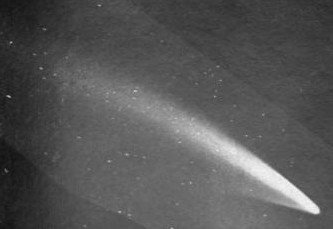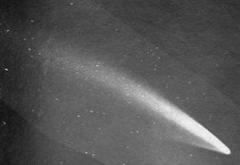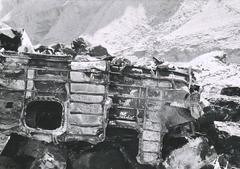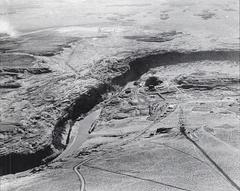
Lowell Observatory and Marble Canyon Visiting Hours, Tickets, and Travel Guide
Date: 14/06/2025
Explore two of Arizona’s most iconic destinations—Lowell Observatory and Marble Canyon—with this comprehensive guide. Whether you’re drawn by the mysteries of the cosmos or the timeless beauty of ancient canyons, this resource covers everything you need: history, key discoveries, practical visitor information, accessibility, and tips for an enriched travel experience.
Contents Overview
- Introduction
- Lowell Observatory
- Founding and Vision
- Landmark Discoveries
- Visitor Information
- Architectural and Scientific Highlights
- Astrotourism and Outreach
- Practical Tips
- FAQ
- Marble Canyon
- Historical and Indigenous Heritage
- Geological and Environmental Significance
- Visitor Information
- Key Attractions and Activities
- Practical Tips
- FAQ
- Combined Recommendations and Summary
- Sources and Further Reading
Introduction
Northern Arizona is home to both the storied Lowell Observatory and the breathtaking Marble Canyon. Lowell Observatory in Flagstaff, founded in 1894 by Percival Lowell, is a beacon of planetary science and astrotourism, famous for discoveries like Pluto and its ongoing role in lunar and planetary research. Marble Canyon, marking the gateway to the Grand Canyon, offers geological wonders, sacred Indigenous sites, and world-class outdoor recreation. Together, these locations provide a rare blend of scientific discovery and natural beauty (Lowell Observatory Visiting Hours, Tickets & History | Flagstaff Historical Site; Marble Canyon Visiting Hours, Tickets, and Essential Visitor Guide: Explore Navajo Bridge, Lee’s Ferry & More).
Lowell Observatory
Founding and Vision
Established by Percival Lowell in 1894, Lowell Observatory was created to pursue planetary observation, especially Mars, leveraging Flagstaff’s clear, high-altitude skies. Lowell’s controversial yet influential studies, including his theories about Martian canals, helped popularize planetary astronomy and inspired future generations (Flagstaff Ecotourism).
Landmark Discoveries
Pluto’s Discovery
In 1930, Clyde Tombaugh discovered Pluto at Lowell Observatory, placing the institution at the forefront of planetary science. This discovery is celebrated annually at the “I Heart Pluto Festival,” featuring exhibits and themed events (TIME World’s Greatest Places 2025).
Contributions to Lunar and Planetary Science
Lowell Observatory’s 24-inch Clark Refractor telescope was instrumental in mapping the Moon for the Apollo missions and has contributed to discoveries such as the expanding universe, the rings of Uranus, and Pluto’s atmosphere (Flagstaff.com).
Visitor Information
Address: 1400 W Mars Hill Rd, Flagstaff, AZ 86001
Access: Easily reached by car from downtown Flagstaff (10 minutes). Free on-site parking is available.
Visiting Hours (Summer 2025):
- Monday, Wednesday, Thursday: Noon – 10:00 pm
- Friday, Saturday, Sunday: Noon – 11:00 pm
- Tuesday: Closed
Check the official Lowell Observatory website for seasonal updates.
Tickets:
- Adults (18–64): $25
- Seniors (65+), Military, Students: $22
- Youth (6–17): $15
- Children under 6: Free
Purchase online or at the ticket office. Advance booking recommended during peak seasons.
Accessibility:
Wheelchair access is provided for most facilities. Some paths are steep—visitors with mobility concerns should contact the Visitor Center for assistance (Lowell Observatory – Plan Your Visit).
Architectural and Scientific Highlights
Historic Telescopes:
The 24-inch Clark Refractor and Pluto Discovery Telescope remain operational and open for public viewing during select programs (Flagstaff Ecotourism).
Marley Foundation Astronomy Discovery Center:
Opened in 2024, this 40,000-square-foot facility offers interactive exhibits, a dramatic central atrium, and an innovative open-air rooftop planetarium with heated seating for year-round stargazing (TIME World’s Greatest Places 2025).
Astrotourism and Outreach
Flagstaff, recognized as the world’s first International Dark Sky City, is a leader in astrotourism, with Lowell Observatory at its heart. Guided tours, hands-on exhibits, and evening stargazing sessions are available. Programs like the Native American Astronomy Outreach Program expand access and appreciation for astronomy across diverse communities (TIME World’s Greatest Places 2025).
Practical Tips
- Dress in Layers: Temperatures drop significantly at night, even in summer.
- Sun Protection: High elevation increases UV exposure—wear sunscreen and a hat.
- Seating & Comfort: Benches are available; some paths are steep.
- No On-site Dining: Downtown Flagstaff is nearby for meals.
- Tickets: Admission includes all exhibits and telescope viewing; day visitors can re-enter for stargazing (AllFlagstaff.com).
Lowell Observatory FAQ
Q: How can I buy tickets?
A: Online or at the Visitor Center; advance booking is recommended.
Q: Is there public transit?
A: Local transit options exist but confirm schedules before visiting.
Q: Can I return for evening stargazing after a day visit?
A: Yes, your ticket allows re-entry the same day.
Q: Are there guided tours?
A: Yes, including the Story of Pluto Tour and Lowell Tour.
Q: Is the observatory wheelchair accessible?
A: Most areas are accessible; contact staff for assistance.
Marble Canyon
Historical and Indigenous Heritage
Marble Canyon’s story stretches back millennia, with archaeological evidence of Navajo, Hopi, and Paiute presence, including petroglyphs and ancient granaries (audiala.com). The Colorado River has long been central to Indigenous culture and sustenance.
European exploration began with John Wesley Powell’s 1869 expedition, whose descriptive naming of “Marble Canyon” captured the allure of its polished limestone cliffs (grcahistory.org). The area achieved national monument status in 1969 and was incorporated into Grand Canyon National Park in 1975 (audiala.com).
Geological and Environmental Significance
Marble Canyon reveals over 200 million years of geological history, with layered limestone, erosional features, and fossil deposits (travelerlifes.com). The ecosystem supports rare species like the humpback chub, pale Townsend’s big-eared bats, and is recognized as an Important Bird Area (audiala.com).
Conservation efforts focus on habitat protection, leave-no-trace principles, and the safeguarding of sacred and archaeological sites (grcahistory.org).
Visitor Information
- Location: Northern Arizona, between Vermilion Cliffs and Page.
- Access: Via US Highway 89A; roads are well-maintained, but services are limited.
- Hours: Open year-round, typically dawn to dusk.
- Fees: Entry to the Marble Canyon area is free, but standard Grand Canyon National Park fees apply for certain sites ($35/vehicle for 7 days; see NPS website).
- Accessibility: Designated parking, accessible restrooms, and trails like Lees Ferry; see the NPS Accessibility Guide.
- Nearby Services: Lodging at Cliff Dwellers Lodge, campgrounds at Lee’s Ferry, and full services in Page, AZ (Cliff Dwellers Lodge).
Key Attractions and Activities
- Lee’s Ferry: Primary river access point for the Grand Canyon; hub for rafting, kayaking, fishing, and hiking.
- Navajo Bridge: Iconic viewpoint spanning the Colorado River, with a visitor center and artisan stalls.
- Hiking: Trails such as Cathedral Wash.
- Wildlife Viewing: Especially California condors, bighorn sheep, and a variety of birds.
- Stargazing: Exceptionally dark skies for astrophotography and celestial observation.
Practical Tips
- Weather: High-desert climate; very hot summers (often exceeding 100°F/38°C), cold nights in winter—plan clothing accordingly.
- Safety: Cliff edges are unguarded; stay well back. Hydrate frequently and be self-sufficient if camping.
- Camping: Boondocking is permitted; established campgrounds at Lee’s Ferry.
- Permits: Required for river trips from Lee’s Ferry; arrange in advance.
- Local Etiquette: Respect Navajo land and traditions; support local artisans (Never Say Someday Family).
Marble Canyon FAQ
Q: Are tickets required?
A: Access to Marble Canyon and Navajo Bridge is free; Grand Canyon park fees apply in some areas.
Q: When is the best time to visit?
A: Spring and fall for mild temperatures and ideal outdoor conditions.
Q: Are there guided tours?
A: Yes, for river trips and hiking; book in advance.
Q: Where can I stay?
A: Cliff Dwellers Lodge, Lee’s Ferry Campground, and hotels in Page, AZ.
Q: Are there dining or grocery options?
A: Limited—bring supplies or use the restaurant at Cliff Dwellers Lodge.
Combined Recommendations and Summary
Lowell Observatory and Marble Canyon exemplify Arizona’s scientific and natural riches. At Lowell, delve into astronomical history and contemporary discovery, surrounded by the world’s first International Dark Sky City. At Marble Canyon, explore ancient landscapes, sacred Indigenous sites, and unparalleled outdoor adventure.
Visitor Tips:
- Verify visiting hours and ticketing in advance.
- Dress for weather and bring essentials (water, sun protection, layered clothing).
- Respect cultural sites and practice leave-no-trace principles.
- Use the Audiala app for self-guided audio tours and updates.
By thoughtfully planning your trip and embracing both destinations’ educational opportunities, you’ll gain a deep appreciation for the intertwined stories of Earth and sky (Lowell Observatory Visiting Hours, Tickets & History | Flagstaff Historical Site; Marble Canyon Visiting Hours, Tickets, and Essential Visitor Guide: Explore Navajo Bridge, Lee’s Ferry & More).
Sources and Further Reading
- Lowell Observatory Visiting Hours, Tickets & History | Flagstaff Historical Site, 2025
- Lowell Observatory Visiting Hours, Tickets & Tips for Exploring Flagstaff’s Historic Astronomy Site, 2025
- Marble Canyon Visiting Guide: History, Ticket Info, Accessibility & Attractions in Arizona, 2025
- Marble Canyon Visiting Hours, Tickets, and Essential Visitor Guide: Explore Navajo Bridge, Lee’s Ferry & More, 2025



